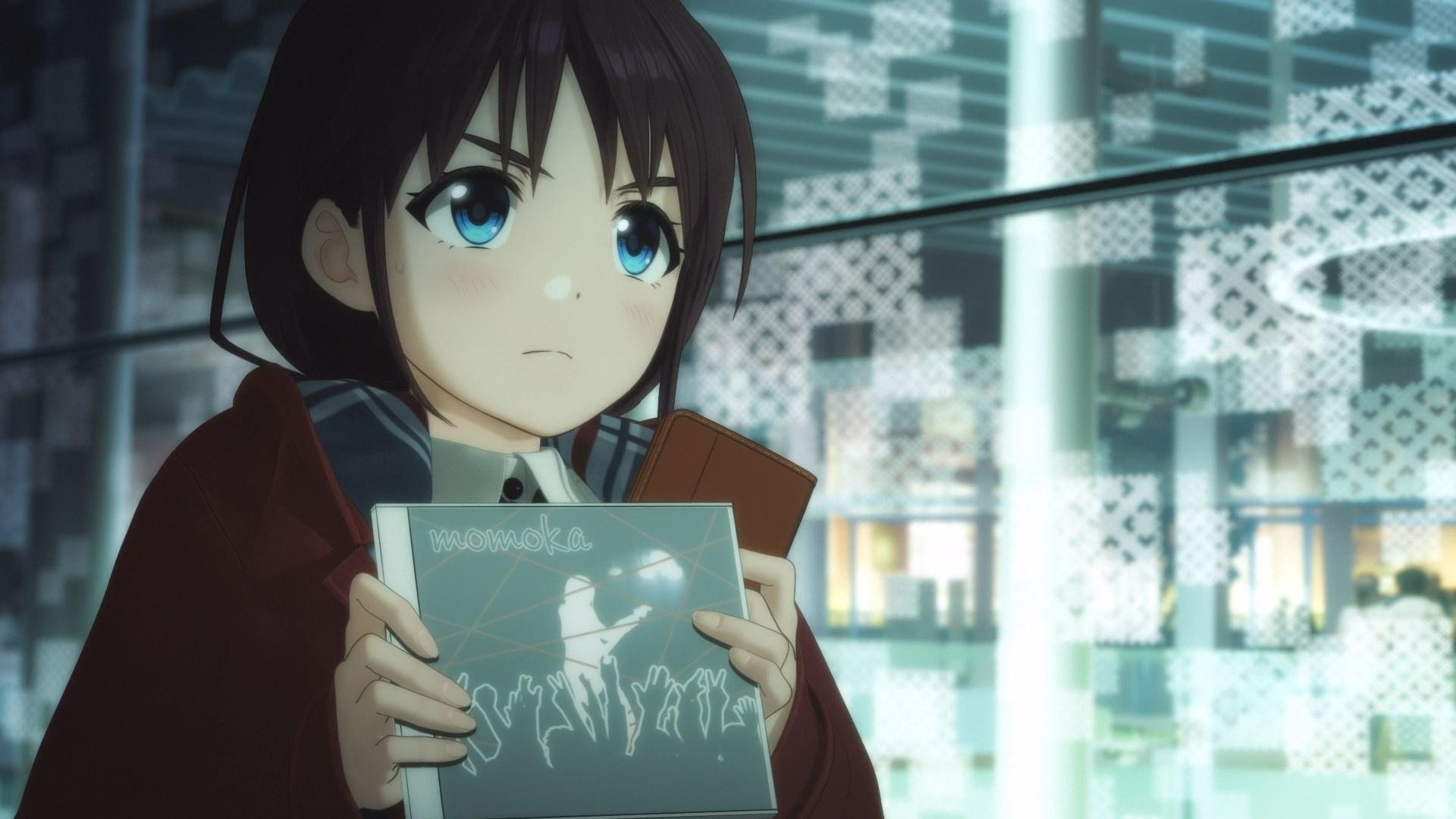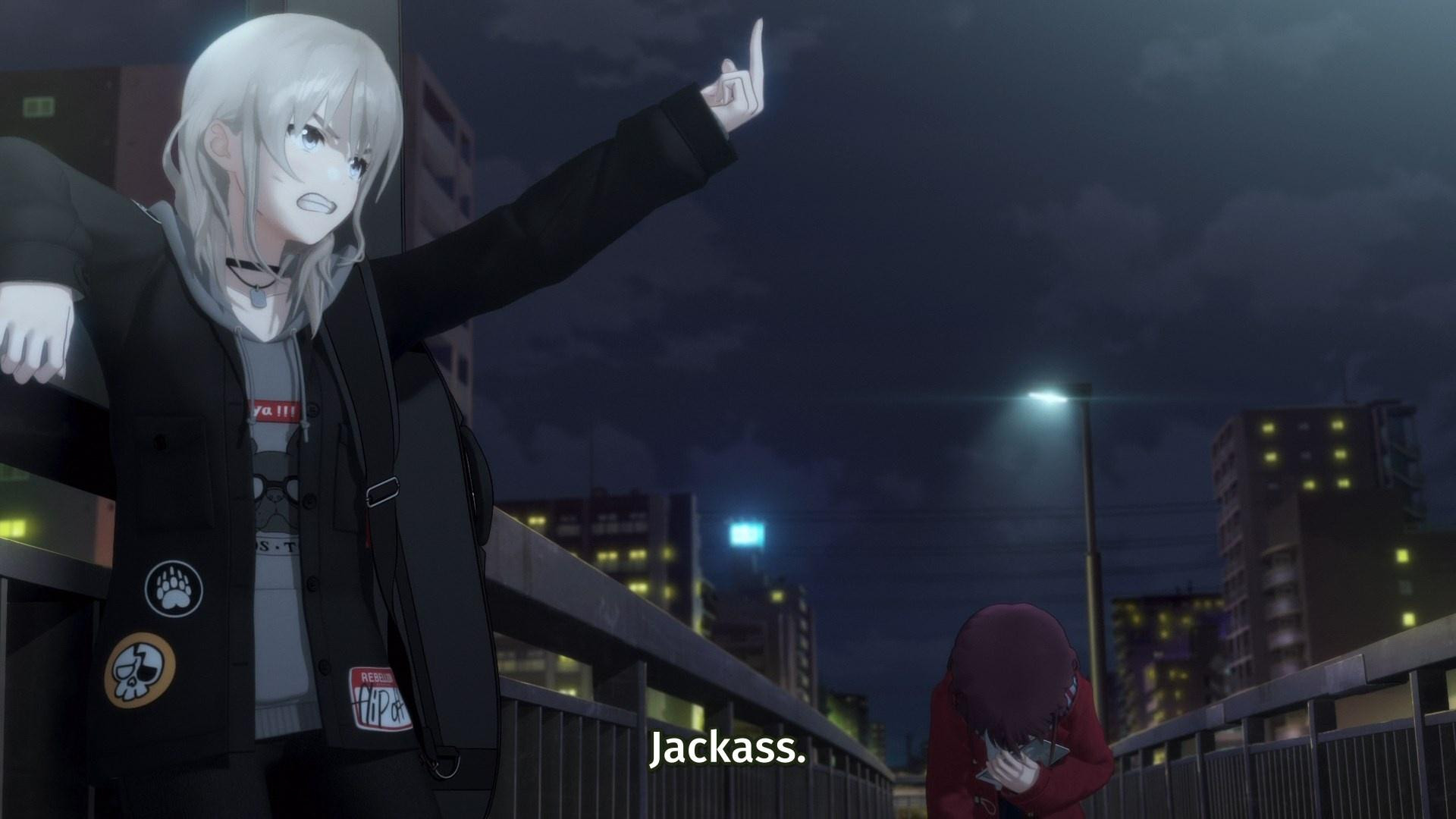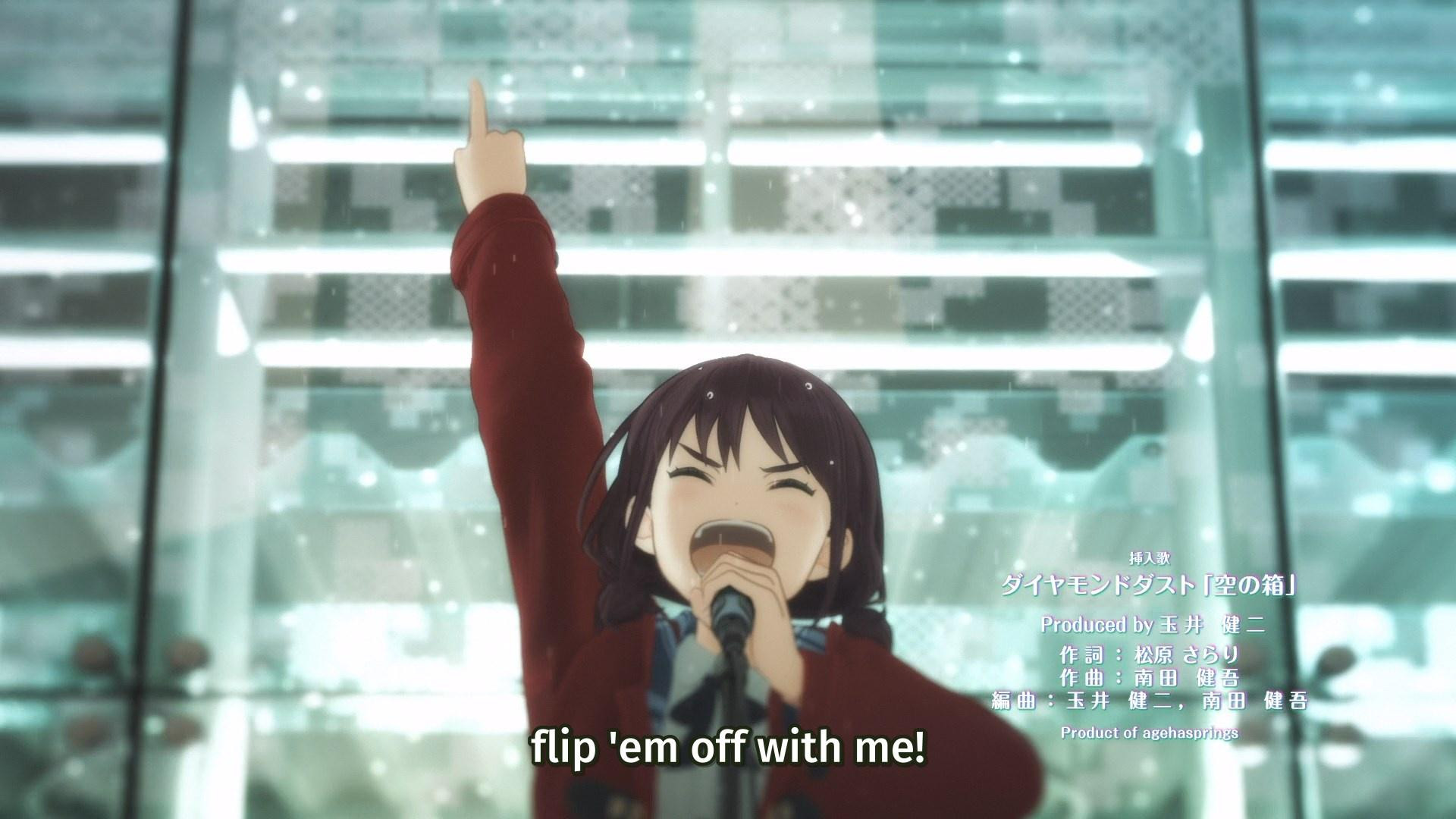One of the most immediately striking aspects of Girls Band Cry is its incredibly unique visual presentation, a real selling point for a series that desperately needs one. However, there’s a significant hurdle for English-speaking viewers: as of right now, there is no official way to legally watch Girls Band Cry in the anglosphere. Despite its visual appeal and intriguing premise, none of the major streaming platforms have licensed the series. It’s only thanks to the fansubbing efforts of SobsPlease that many international fans are even able to experience this anime, making its accessibility a frustrating barrier to entry for those eager to dive in. This lack of legal streaming options is particularly disappointing because Girls Band Cry offers a viewing experience unlike almost any other anime currently airing, primarily due to its distinctive visual style.
What truly sets Girls Band Cry apart is its bold approach to 3D CGI animation. While 3D CGI in anime is no longer a novelty, Girls Band Cry distinguishes itself from contemporaries like Bang Dream! It’s MyGO!!! through a deliberate contrast. The anime juxtaposes realistically rendered environments with incredibly expressive and fluid character animation that often leans into a more cartoonish aesthetic. This combination, further enhanced by visual metaphors that directly represent characters’ emotions, constructs a world that feels both grounded and intensely stylized. This stylistic choice is not only unique within the realm of 3D CG anime but also serves to amplify the emotional core of the narrative. While such a distinctive visual style might initially deter some viewers accustomed to more conventional anime aesthetics, it is precisely this difference that makes Girls Band Cry so compelling and potentially influential in shaping future anime productions.
So, what narrative is unfolding within this visually arresting world? At its heart, Girls Band Cry presents a classic underdog story centered around the passionate world of rock bands. However, it injects this familiar framework with a palpable sense of urgency and competitive spirit, elements that resonate particularly strongly within the current anime landscape.
We are introduced to our protagonist, Iseri Nina [Uchiyama Rina], a recent arrival in Tokyo. Nina appears to be escaping a difficult family situation, though the specifics are initially kept vague. Guided by online buzz, she stumbles upon a street performance by her favorite musician, Kawaragi Momoka [Yuuri]. Momoka is revealed to be a former member and songwriter for a disbanded band named Diamond Dust. An encounter ensues after Nina nervously approaches Momoka to express her admiration. Their meeting is quickly interrupted when a pair of punk-looking individuals appear, seemingly chasing Momoka away from her performance spot. In a moment of defiance, Momoka responds with a double middle finger gesture as she and Nina, now swept up in the chaos, flee together. This recurring middle finger motif becomes both a humorous gag and a surprisingly earnest visual symbol that underscores the rebellious spirit at the heart of the series.
Nina and Momoka quickly forge a bond, sharing their personal struggles. Nina hints at the constraints of her home life, while Momoka reveals her falling out with former bandmates over songwriting credits and her impending departure from Tokyo. However, Momoka’s planned move is swiftly derailed. Nina, now in possession of Momoka’s guitar, tracks her down and, with the unexpected assistance of the same “punks” from earlier, convinces her to stay. The episode culminates in an impromptu street performance, solidifying their burgeoning partnership. The central theme of the episode, and perhaps the series, is powerfully articulated by Nina’s impassioned shout to Momoka amidst the crowd: a desperate plea to be understood and accepted.
The narrative’s emotional resonance is amplified by Nina’s initial motivation for moving to Tokyo – not driven by grand ambition, but by a fundamental feeling of displacement. This yearning for belonging is a relatable sentiment, particularly for viewers who have sought escape from environments where they felt misunderstood. The series subtly hints at deeper layers to Nina’s character, with a possible reading of her as queer and closeted, based on her reaction to learning about Momoka’s roommate. While this interpretation remains speculative, it adds another dimension to her search for acceptance. More broadly, Girls Band Cry exudes a sincere, almost defiant attitude that resonates with a contemporary “punk” sensibility, even if the term itself feels somewhat diluted in 2024. The anime’s willingness to push visual and narrative boundaries sets it apart and contributes significantly to its appeal.
Girls Band Cry distinguishes itself through its delivery. The anime uses striking visual metaphors to externalize emotions. Nina’s frustration manifests as visible red particles, while the impact of Momoka’s music is visualized as tangible waves of color and shattering glass. These aren’t literal events, but the show’s commitment to portraying feelings through such dynamic visuals creates a powerful and unique viewing experience. This approach invites comparison to another musically themed anime, Jellyfish Can’t Swim in the Night, which also explores emotional depth through unconventional storytelling. While both series are still in their early stages, Girls Band Cry‘s distinct visual language positions it as a noteworthy contender in the current anime season.
Looking at the broader anime landscape, Girls Band Cry arrives at a potentially pivotal moment for the “girls band” genre. Contrary to predictions made about the idol anime genre, it has seen a significant decline. Currently, THE IDOLM@STER: SHINY COLORS is the only traditional idol anime airing, signaling a possible shift away from the idol format and towards girls band anime. While BOCCHI THE ROCK! could be seen as an outlier, the emergence of series like MyGO and now Girls Band Cry suggests a trend. These girls band anime, despite their diverse styles and narratives, share a common thread of visual and thematic experimentation, making them particularly exciting. If this trend continues, the resurgence of girls band anime could mark a significant evolution in the genre, potentially defining the future of music-themed anime. The rocker girls are back, and Girls Band Cry is at the forefront of this potentially impactful wave.
1: While technically just outside of Tokyo, the distinction is minor, similar to the Chicago/Chicagoland area.




